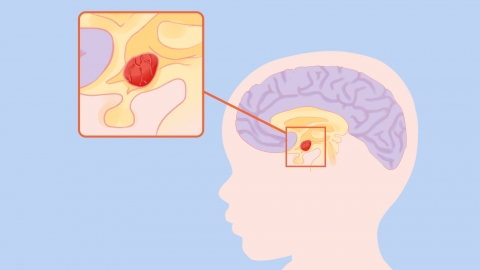What are the differences between cerebral palsy and developmental delay?
Under normal circumstances, cerebral palsy and developmental delay differ in aspects such as etiology, core symptoms, accompanying problems, treatment goals, and prognosis. A detailed analysis is as follows:

1. Etiology: Cerebral palsy mainly results from non-progressive brain damage during the fetal or infant period, such as hypoxia, infection, or trauma, leading to dysfunction of the brain's motor centers. Developmental delay arises from multiple factors, including genetic metabolic abnormalities, malnutrition, and insufficient environmental stimulation, which affect the developmental progress of multiple body systems.
2. Core Symptoms: Cerebral palsy centers on motor dysfunction, manifested as limb rigidity, spasticity, poor coordination, obvious postural abnormalities, and delayed motor development compared to peers. The core of developmental delay involves comprehensive or partial lag in developmental milestones, such as slow height and weight gain, inadequate language expression, and delayed acquisition of motor skills, without evident motor or postural abnormalities.
3. Accompanying Problems: Cerebral palsy is often accompanied by various complications such as epileptic seizures, visual or hearing impairments, and swallowing difficulties; some patients may also have delayed intellectual development. Developmental delay may not involve other complications if it affects only a single domain. If multiple domains are involved, learning difficulties may occur, but severe complications like epilepsy are rarely seen.
4. Treatment Goals: The treatment of cerebral palsy aims to improve motor function and self-care abilities, alleviating symptoms through rehabilitation training, physical therapy, and enhancing the patient's mobility. The goal of treating developmental delay is to help the lagging developmental areas catch up to normal levels by providing nutritional support and targeted interventions to help patients reach the developmental standards of their peers.
5. Prognosis: Due to organic brain damage, the symptoms of cerebral palsy are difficult to completely eliminate. Long-term treatment can improve quality of life, but a complete cure is not possible. If developmental delay is detected early and the underlying causes are addressed, most patients can gradually approach normal developmental levels through scientific interventions, resulting in a relatively favorable prognosis.
If developmental abnormalities are noticed in a child, an early assessment and diagnosis should be conducted at a professional institution. Targeted training and nutritional support should be implemented, with regular monitoring of developmental progress to ensure effective intervention.






